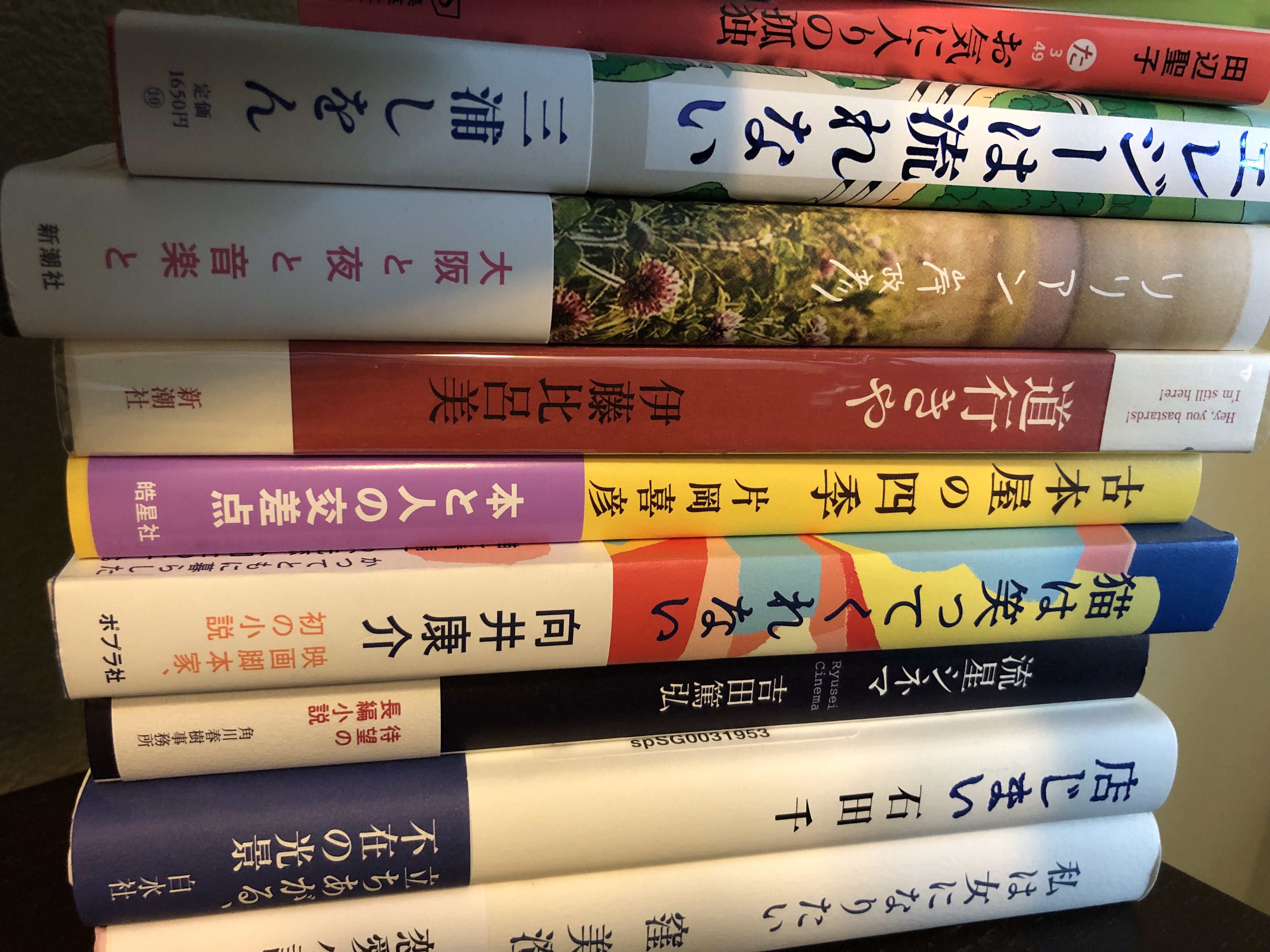 アカガミ、窪美澄、河出書房新社、2016
アカガミ、窪美澄、河出書房新社、2016
Akagami, by Misumi Kubo, Kawade Publishing, 2016
“Akagami” is Misumi Kubo’s vision of what would happen if the trends seen among Japan’s younger generation were to reach an extreme. These trends—a rising suicide rate, a preference for one’s own company and hobbies over social activities, lack of interest in sex and romantic relationships— are both sensationalized and treated with genuine concern by the media, politicians and academics, but Kubo made it come alive for me.
This novel, published in 2016, is set in 2030, and in the 10 years since the Olympics (an event that seems to be used as a turning point or catalyst in many books) the number of suicides among people ages 10 to 20 climbed from 6,000 a year to over 100,000 and 4 million were seeing psychiatrists. Pundits are at a loss, blaming these problems on video games, climate change, a growing withdrawal into virtual reality, or perhaps radioactive materials spewed into the air after the nuclear disaster. Whatever the reason, Shibuya’s scramble crossing might still be lit up with neon, but there is almost no one under the age of 30 there.

Empty Shibya crossing. Photograph by Martin Hladik
The first section of the novel is narrated by Log, a high-end sex worker and researcher who was summoned home by the Japanese government in the hope that her expertise could help resolve the mystery behind young people’s complete indifference to sex. Mitsuki is one of the young women Log interviews, although the setting in this case is a bar, where Log rescued Mitsuiki from a suicide attempt. Mitsuki is a nurse in a geriatric facility and her lack of interest in food, other people, fashion—anything other than keeping any speck of dust and dirt from polluting her apartment—makes her typical among her age group. But she doesn’t show as much revulsion as others do when Log mentions love, and so she recommends Mitsuki for Akagami, a government matchmaking program.

An area of bars and restaurants outside Shinjuku station that is normally packed with people. Photographed by M/k/suke Umeda when a typhoon forced people off the streets.
The next section, narrated by Mitsuki, is a moving—and sometimes very funny—portrayal of the awakening of the senses. The government plays a part in this by teaching the Akagami applicants about love, marriage and family using movies, anime and novels (some of the applicants are so repulsed that they walk out), but it is really her own curiosity that helps her overcome her fears. Once she is matched with Satsuki, who has joined Akagami to provide for his family, they live together in a well-guarded apartment complex, where they are supposed to eventually “procreate” and produce a baby—an end that the nurses and doctors stationed at the complex, the cooks who make their food, and the guards at the gates are all working for. Satsuki and Mitsuki’s slow, tentative moves toward friendship and then love are sweet and sad and funny all at once (Kubo is so good at making readers feel multiple, contradictory emotions all at once).
In one scene, Satsuki has a fever and Mitsuki gives him a bed bath as he sleeps. She realizes that the body of a man in his 20s is nothing like that of the elderly men she cares for at work. Having grown up in a generation that is repulsed by human touch, she is finally figuring out what sexual arousal is, and I didn’t know whether to laugh or cry. Kubo also enjoys a little role reversal by having Mitsuki ask Satsuki why he doesn’t seem to want to have sex with her and promises to wait until he’s ready.
Mitsuki, absorbed in her new feelings for Satsuki and then her pregnancy, innocently takes Akagami at face value, and Kubo—for the most part—lets us drift along with her in the middle section of the book, but she yanks us out of this warm cocoon in the last section, narrated by Satsuki. He has never entirely trusted the program, and wonders about the trucks that occasionally drive by the apartment building, yelling and tossing sheets of paper over the fence. He feels like they have been “paired off like animals, encouraged to mate and caged in by fences,” “treated with kid gloves like an endangered species.” As Mitsuki nears the end of her pregnancy, they are moved to a luxurious apartment building deep in the forest. Satsuki realizes that, although the program began in 2020, there are no 10 year-olds here, only babies. He manages to pick up one of the leaflets thrown over the wall that the guards missed, and finds that it reads, “The children born in Akagami become the nation’s property and are used for the nation’s ends.” His disquiet only grows when he learns that “akagami” is shorthand for the draft cards sent out by the military.

An example of the draft notice sent out by the Japanese army in World War II, known colloquially as “akagami” (literally, red paper).
Kubo leaves the reader with some hope, at least on a small scale. She starts out with a large-scale picture of Japan’s future, and then narrows our focus to one couple to make us really care about the potential future she is imagining in “Akagami.” I think that’s why I like novels so much—at their best, they make you care deeply about events and facts we read about in history books and newspapers and then put out of mind. This is perhaps proof of both the small, petty side of human nature and our capacity to excite the imagination and inspire empathy.
*This book has not been translated into English, nor have any of Kubo’s other novels, but part of her novel 「ふがいない僕は空を見た」has been published by Strangers Press as a stand-alone short story entitled “Mikumari,” translated by Polly Barton.
 トリニティ、窪美澄、新潮社、2019 (Trinity, by Misumi Kubo, published by Shinchosha in 2019)
トリニティ、窪美澄、新潮社、2019 (Trinity, by Misumi Kubo, published by Shinchosha in 2019)




Recent Comments